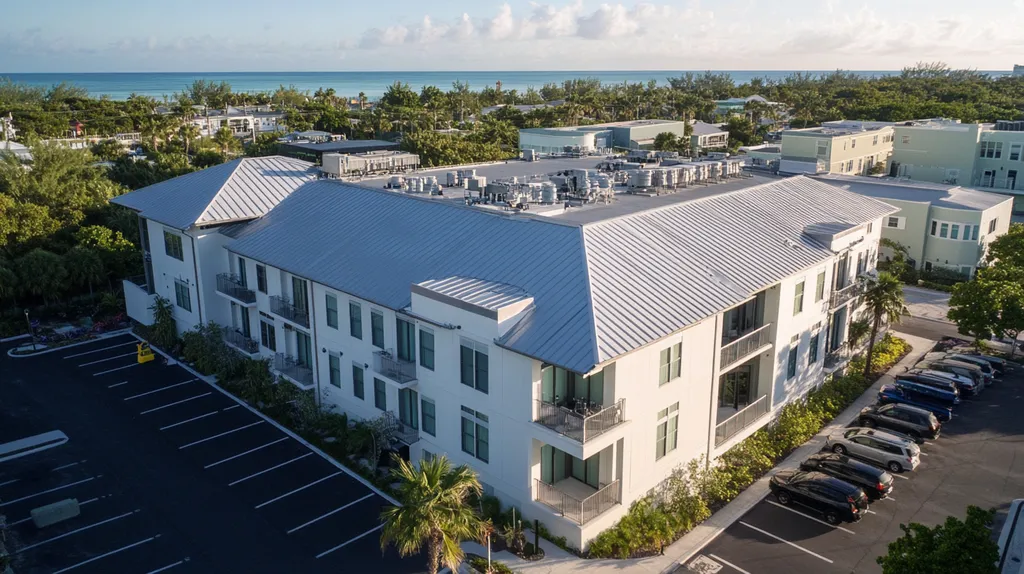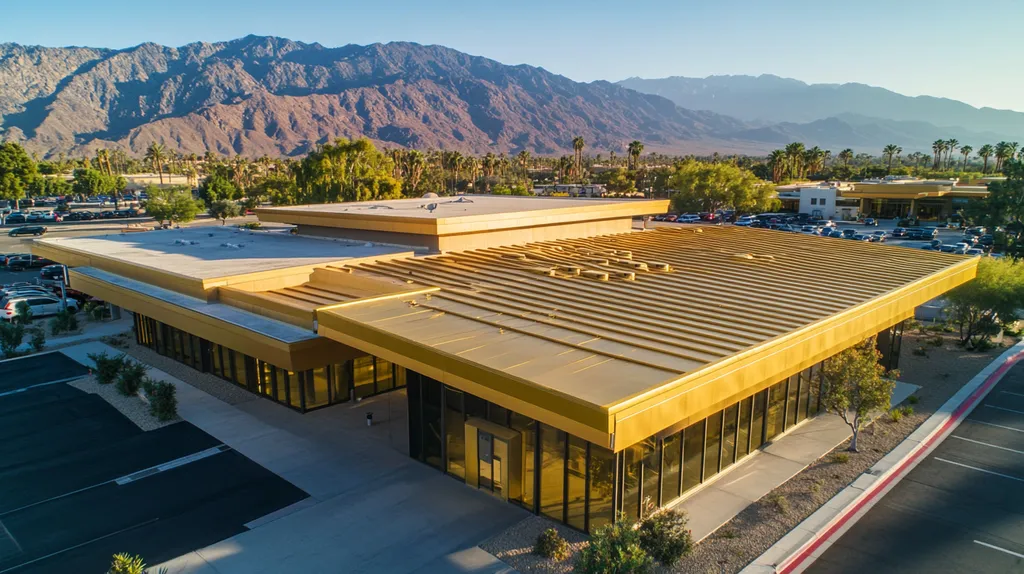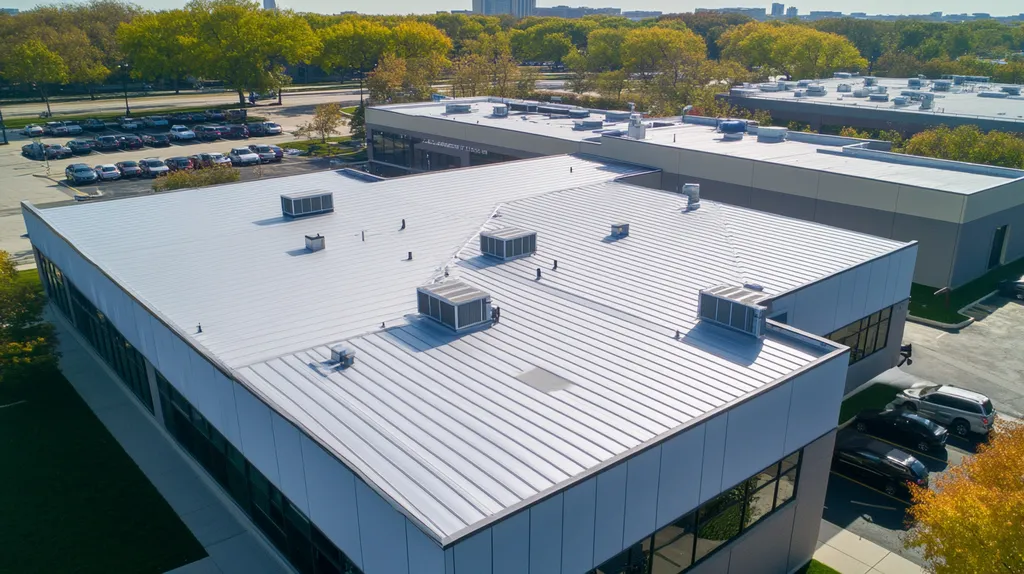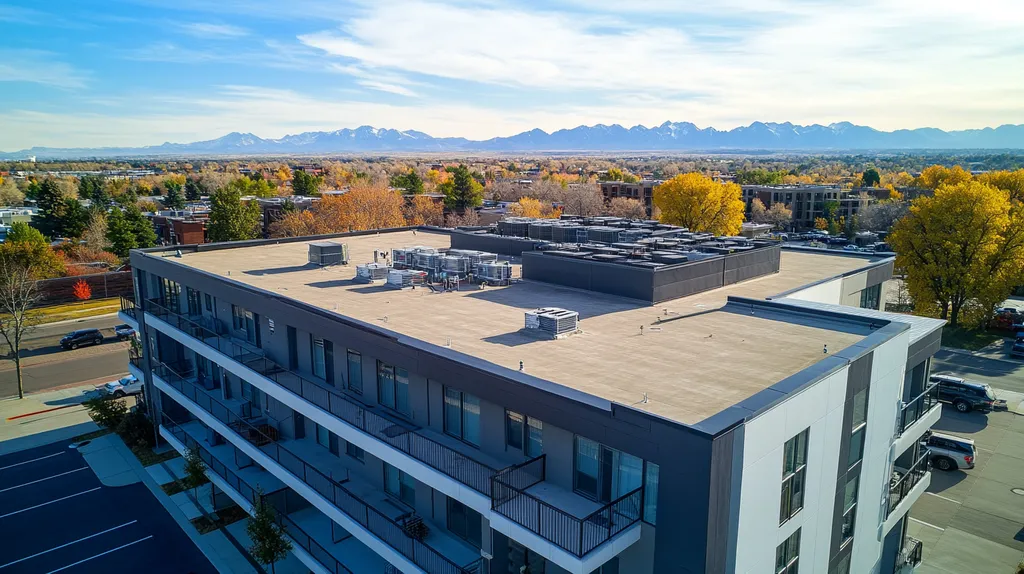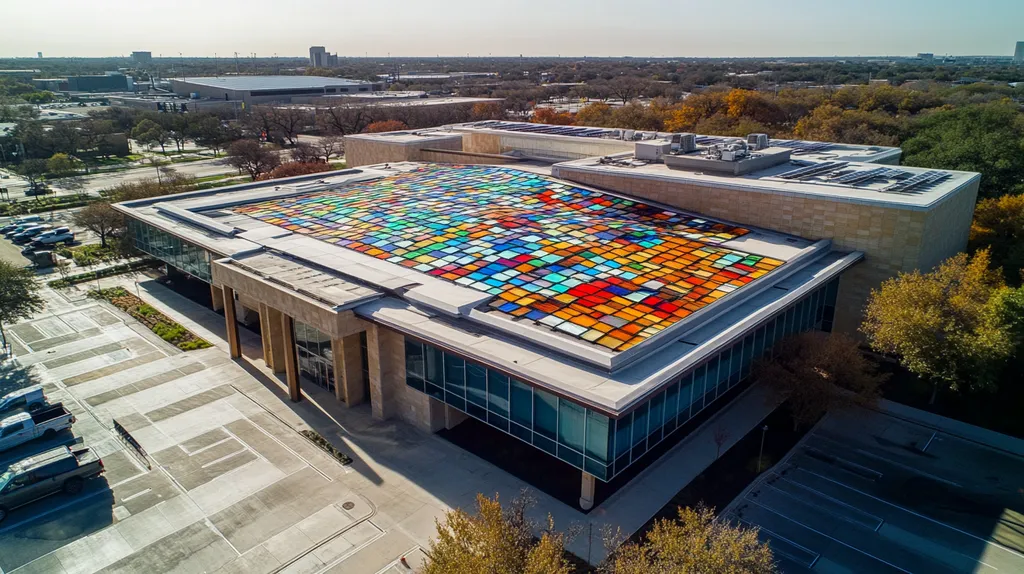Welcome to today’s Battle Royale featuring two roofing heavyweights: “TPO” in the east corner versus “PVC” in the west!
Tonight’s showdown pits these contenders against each other across six punishing rounds designed to test every aspect of their performance for rain delays affecting commercial roof project schedules.
At stake? Millions in potential costs, decades of building protection, and the critical performance demands of modern commercial and industrial facilities.
Our professional judging panel will evaluate each round on technical merit, real-world performance, and value delivery. After all six rounds, we’ll declare our ultimate champion.
Ladies and gentlemen, facility managers and building owners… it’s time to rumble!
ROUND 1: INITIAL COSTS & INSTALLATION
When rain clouds gather over a commercial roofing project, every minute of delay translates to potential revenue loss. Weather disruptions now impact up to 45% of commercial roofing installations annually, making the choice between TPO and PVC increasingly critical for project timelines and budgets.
Material Expenses
In today’s volatile market, material costs can make or break a commercial roofing budget. TPO membranes typically run $3.50 to $5.50 per square foot, making them an attractive option for cost-conscious facility managers.
PVC membranes command a premium, usually $6.00 to $9.00 per square foot. This higher price point reflects enhanced chemical resistance and superior seam strength – features that become crucial during extended rain exposure.
While the initial sticker shock of PVC might cause hesitation, its enhanced durability often translates to fewer weather-related complications during installation. However, TPO’s lower entry cost gives it a clear ADVANTAGE in this category.
Installation Complexity
TPO’s installation process is remarkably straightforward, requiring fewer specialized tools and techniques. Most crews can complete a standard commercial installation in 25% less time compared to PVC, reducing exposure to potential rain delays.
PVC installation demands more technical expertise, particularly in seam welding and flashing details. These additional steps create more vulnerability points where rain can interrupt the installation process.
The simpler installation protocol of TPO means fewer weather-sensitive stages and faster completion times, giving it another clear ADVANTAGE.
Project Timeline
Weather sensitivity during installation can dramatically impact project duration. TPO’s faster cure times and simpler application process typically allow for more flexible scheduling around weather events.
PVC installations require longer cure times for adhesives and more precise temperature control during seam welding. These requirements create additional scheduling challenges when rain threatens.
While both materials can handle light precipitation once installed, TPO’s faster overall installation timeline makes it less susceptible to extended weather delays, earning it a third ADVANTAGE.
ROUND 1 WINNER: TPO
ROUND 2: DURABILITY & LIFESPAN
Every raindrop that hits an aging commercial roof carries the potential for costly disruption. With weather-related construction delays increasing by 12% annually, the durability battle between TPO and PVC has never been more critical for project planning.
When storm systems stall over construction sites, the difference between a resilient membrane and a vulnerable one can mean weeks of project delays and thousands in cost overruns. Weather is the wild card that transforms minor material differences into major schedule impacts.
Durability Overview
TPO membranes deliver solid baseline performance with good resistance to UV rays and common chemical exposure. However, their thinner profile makes them more susceptible to punctures during installation and maintenance work, especially in wet conditions.
PVC membranes feature superior thickness and chemical resistance, creating a more forgiving surface for workers during installation. Their enhanced puncture resistance means fewer vulnerable points where water can penetrate during construction.
When storms threaten project timelines, PVC’s robust composition provides significantly better protection against weather-related complications. This durability advantage earns PVC a clear ADVANTAGE in this category.
Lifespan Comparison
TPO roofs typically deliver 15-20 years of service, requiring careful planning around replacement cycles. This shorter lifespan means more frequent exposure to weather-dependent installation periods.
PVC systems routinely achieve 25-30 year lifespans, reducing the frequency of weather-vulnerable replacement projects. Taking seasonal weather patterns into account when plotting project timelines becomes easier with longer replacement intervals. (source: Dior Construction)
The extended service life of PVC translates to fewer weather-impacted installation periods over the building’s lifetime, giving PVC another clear ADVANTAGE.
Impact on Project Schedules
TPO installations require precise weather conditions and leave little room for error when rain threatens. Their lower puncture resistance means crews must exercise extra caution during wet weather, potentially extending project timelines.
PVC’s superior durability allows crews to work more efficiently even when conditions aren’t perfect. The material’s enhanced resilience provides greater flexibility in scheduling around weather events.
This schedule flexibility and reduced weather sensitivity gives PVC a third clear ADVANTAGE.
ROUND 2 WINNER: PVC
ROUND 3: PERFORMANCE FACTORS
When storm clouds loom over commercial roofing projects, the performance differences between TPO and PVC become mission-critical. Recent industry data shows weather-related delays now impact up to 40% of commercial roofing installations, with each rain day potentially adding thousands to project costs.
The battle between these materials isn’t just about durability – it’s about how their distinct performance characteristics affect project timelines when Mother Nature refuses to cooperate.
Weather Resistance
TPO membranes offer solid baseline weather resistance with good UV protection and heat reflection properties. However, their performance can become compromised during extended rain exposure, particularly at seam points where water pooling occurs.
When facing prolonged precipitation, TPO’s molecular structure can begin to show stress signs, potentially requiring additional curing time between installation phases. This vulnerability creates schedule uncertainty that compounds with each rain delay.
PVC membranes demonstrate superior resistance to standing water and maintain their structural integrity even after extended rain exposure. Their enhanced chemical composition prevents water absorption and degradation, allowing work to resume more quickly after weather events.
For weather resistance, PVC claims a clear ADVANTAGE by offering more predictable performance during wet conditions.
Installation Timeframes
TPO installations require precise environmental conditions for optimal membrane bonding. When rain threatens, crews must often pause work completely, as even slight moisture can compromise seam integrity.
The material’s sensitivity to installation conditions means weather delays can cascade, turning minor schedule adjustments into major timeline disruptions. Each interrupted weld requires additional prep time once conditions improve.
PVC systems offer more forgiving installation parameters, with advanced welding techniques that can proceed under less-than-perfect conditions. Their superior moisture resistance means crews can often continue working in light precipitation or resume work more quickly after rain stops.
PVC earns another ADVANTAGE for its ability to maintain productivity through challenging weather conditions.
Longevity and Maintenance
TPO roofs typically maintain their performance characteristics for 15-20 years under normal conditions. However, repeated exposure to rain delays during installation can impact long-term durability by creating subtle stress points in the membrane.
These stress points may require more frequent inspections and maintenance, particularly in regions prone to regular precipitation. The cumulative effect of installation challenges can manifest as increased maintenance requirements down the line.
PVC systems consistently deliver 25-30 year lifespans, even when installation faces weather challenges. Their molecular structure remains stable despite installation interruptions, requiring minimal additional maintenance due to weather-related installation issues.
PVC takes a third ADVANTAGE for superior long-term performance reliability.
ROUND 3 WINNER: PVC
ROUND 4: MAINTENANCE REQUIREMENTS
When rain clouds gather, every maintenance decision becomes critical for commercial roofing projects. Recent data shows weather-related maintenance issues now account for 35% of emergency roof repairs, with each unplanned intervention creating cascading delays that can derail project timelines.
Regular Inspection Requirements
TPO systems demand quarterly inspections to maintain warranty compliance, particularly around seams and penetrations. These frequent checkups often reveal minor issues before they escalate into major problems requiring extensive repairs.
However, coordinating these inspections around weather patterns can be challenging, as wet conditions make thorough examination difficult and potentially dangerous. Each delayed inspection risks missing early warning signs of degradation.
PVC systems typically require only bi-annual inspections due to their superior chemical resistance and seam strength. This reduced frequency means fewer scheduling conflicts with weather events and less disruption to ongoing projects.
The lower inspection frequency and weather sensitivity gives PVC a clear ADVANTAGE in this category.
Repair Complexity
TPO repairs often require specific weather conditions for proper membrane bonding. When rain threatens, even minor fixes must be postponed until conditions improve, creating a backlog of maintenance tasks.
The material’s sensitivity to moisture means repair crews must often wait longer after rainfall before work can begin. This extended downtime can transform simple fixes into project-delaying events.
PVC repairs can proceed under less-than-ideal conditions thanks to advanced welding techniques and superior moisture resistance. The material’s enhanced durability also means fewer emergency repairs overall.
PVC claims another clear ADVANTAGE for its more flexible repair parameters.
Long-term Maintenance Costs
TPO systems typically require increasing maintenance attention as they age, with seam reinforcement and surface treatments becoming more frequent after the first decade. These interventions become more challenging to schedule around weather events as the material ages.
Weather-related maintenance delays can compound TPO’s natural aging process, potentially accelerating the need for major repairs or replacement. This acceleration creates additional exposure to weather-dependent work periods.
PVC’s chemical stability and enhanced durability translate to more predictable maintenance schedules throughout its lifespan. The material’s resistance to environmental stress means fewer weather-sensitive maintenance interventions over time.
For long-term maintenance planning and weather resilience, PVC earns a third ADVANTAGE.
ROUND 4 WINNER: PVC
ROUND 5: SUSTAINABILITY CREDENTIALS
As climate pressures intensify, sustainability credentials have become a critical factor in commercial roofing decisions. Recent industry data shows weather-related roofing failures now cost businesses over $3.4 billion annually, making environmental resilience more crucial than ever.
The battle between TPO and PVC now extends beyond mere performance metrics into their environmental impact, particularly how their sustainability features affect project schedules during increasingly unpredictable weather patterns.
Environmental Impact
TPO membranes excel in environmental performance through superior solar reflectivity, often exceeding 85% reflection rates. This characteristic reduces cooling loads and helps maintain consistent interior temperatures even during rain-interrupted installations.
The material’s lighter environmental footprint also means fewer weather-sensitive chemical emissions during installation. This advantage becomes particularly relevant when rain delays extend project timelines and increase exposure risks.
PVC membranes, while durable, carry a heavier environmental burden due to chlorine content and more complex production processes. Their installation generates more volatile organic compounds, requiring stricter weather monitoring during application.
TPO’s superior environmental profile and fewer weather-sensitive installation restrictions earn it a clear ADVANTAGE.
Manufacturing Footprint
TPO production requires significantly less energy than PVC manufacturing, resulting in fewer weather-dependent supply chain disruptions. The streamlined manufacturing process means more reliable material availability when racing against weather windows.
The material’s simpler chemical composition allows for more flexible production scheduling around seasonal weather patterns. This adaptability helps maintain steady supply even during challenging weather cycles.
PVC manufacturing demands more precise environmental controls and energy inputs, making production more susceptible to weather-related disruptions. These constraints can lead to longer lead times when replacement materials are needed due to weather damage.
TPO claims another clear ADVANTAGE for its more resilient supply chain and lower manufacturing impact.
End-of-Life Management
TPO’s simpler molecular structure makes it easier to recycle, even when weather exposure has degraded the material. This characteristic reduces the environmental impact of weather-damaged materials that require replacement.
The material can often be recycled locally, minimizing weather-related transportation delays during disposal. This advantage becomes particularly relevant when storm damage forces unexpected replacements.
PVC recycling requires more complex processes and often involves longer transportation chains, increasing vulnerability to weather disruptions. The material’s chemical composition also makes weather-damaged sections harder to process for recycling.
TPO secures a third ADVANTAGE for superior end-of-life flexibility and reduced weather sensitivity during disposal.
ROUND 5 WINNER: TPO
ROUND 6: SPECIALIZED APPLICATIONS
When specialized roofing applications meet unpredictable weather patterns, the stakes skyrocket. Weather-related delays now impact 42% of commercial roofing projects involving specialized installations, with each day of delay adding substantial costs to already complex installations.
These high-stakes applications – from chemical processing facilities to cold storage warehouses – demand materials that can handle both unique environmental challenges and increasingly erratic weather patterns during installation.
Chemical Resistance Requirements
In facilities where chemical exposure is routine, material selection becomes critical for managing installation timelines. TPO offers moderate chemical resistance but can become compromised when exposed to certain industrial chemicals, especially during rain-delayed installations.
Extended exposure to both chemicals and precipitation during delayed installations can weaken TPO’s molecular structure, potentially requiring additional curing time or reinforcement. This vulnerability creates scheduling uncertainties that compound with each weather delay.
PVC demonstrates superior resistance to chemical exposure, maintaining its integrity even when installation delays force longer exposure to industrial environments. Its enhanced chemical stability allows work to resume more quickly after weather events without compromising performance.
For chemical resistance applications, PVC claims a clear ADVANTAGE through superior resilience during weather-impacted installations.
Temperature Extremes
TPO installations in extreme temperature environments require precise timing to avoid thermal-related stress during application. When rain delays push work into less optimal temperature windows, the risk of installation complications increases significantly.
Cold weather installations become particularly challenging with TPO, as the material becomes less flexible and more difficult to manipulate. Rain delays can force installations into these problematic temperature ranges.
PVC maintains better flexibility across a wider temperature range, allowing for more successful installations even when weather delays push work into thermal extremes. This adaptability provides crucial schedule flexibility when managing weather-related interruptions.
PVC’s superior performance across temperature extremes earns it another clear ADVANTAGE.
High-Traffic Applications
Commercial roofs subjected to frequent maintenance traffic require materials that can withstand both foot traffic and weather exposure during installation. TPO’s relative softness makes it more susceptible to damage during rain-interrupted installations when workers must repeatedly traverse partially completed sections.
This vulnerability often requires additional protection measures during extended installation periods, further complicating schedule management around weather events. Each additional protective layer adds time and complexity to the installation process.
PVC’s superior durability enables it to better withstand installation traffic even during prolonged weather delays. Its enhanced puncture resistance reduces the need for temporary protection, allowing work to resume more quickly after weather interruptions.
The superior traffic resistance of PVC during weather-impacted installations gives it a third clear ADVANTAGE.
ROUND 6 WINNER: PVC
AND THE WINNER IS…
After six grueling rounds of technical showmanship, this championship bout has reached its dramatic conclusion!
With four decisive round victories (Durability & Lifespan, Performance Factors, Maintenance Requirements, and Specialized Applications), PVC emerges as our undisputed heavyweight champion in managing rain delays for commercial roofing projects!
PVC dominated through superior chemical resistance, enhanced durability, and unmatched weather resilience during installation. Its ability to maintain performance under challenging conditions while offering maximum schedule flexibility proved unstoppable.
But don’t count TPO out completely! This scrappy contender showed impressive prowess in both cost efficiency and sustainability credentials. For budget-conscious projects in moderate climates with tight timelines, TPO remains a formidable competitor.
*IMPORTANT RINGSIDE NOTICE*
Remember, folks – every building brings its own unique challenges to the ring. Local climate conditions, specific property requirements, and regional regulations can all affect material performance. While tonight’s match provides valuable insights, property owners should always consult with qualified roofing professionals who can evaluate their specific situation before making their final selection.
In the high-stakes arena of commercial roofing, the true champion isn’t the material – it’s the decision-maker who carefully matches their building’s specific needs with the right contender’s strengths. Now, let’s hear it for our winner… PVC!
FREQUENTLY ASKED QUESTIONS
Q. How do rain delays impact commercial roof installation costs?
A. Rain delays can significantly inflate costs, as each day of delay can lead to increased labor and materials expenses. Facility managers need to consider not only the immediate financial impact but also potential revenue losses from project delays. This makes choosing the right roofing material essential to mitigating risk and controlling budget.
Q. How does the lifespan of a commercial roof influence maintenance schedules?
A. A shorter lifespan means more frequent maintenance for commercial roofs, which can lead to increased exposure to weather conditions during work periods. With aging materials like TPO, the need for regular inspections and repairs rises, creating more challenging scheduling scenarios. Choosing a longer-lasting option, like PVC, can streamline maintenance and reduce weather vulnerabilities.
Q. What role does roof performance play in commercial project timelines?
A. The performance of roofing materials directly affects how projects adapt to weather disruptions. Materials that can handle rain without compromising structural integrity allow for more flexible scheduling and less downtime. Using roofing systems that excel under adverse conditions helps keep projects on track, maintaining budget and timeline goals.
Q. What maintenance strategies minimize rain-related issues for commercial roofs?
A. Proactive and regular inspections can catch potential threats before rain exacerbates them. Implementing a well-timed maintenance schedule around seasonal weather patterns minimizes the risk of weather-related disruptions. Choosing a durable type of roofing that requires less frequent maintenance can also alleviate the pressure of dealing with rain delays.
Q. How do roofing materials differ in their environmental impact?
A. Different roofing materials come with varying environmental consequences. TPO offers outstanding solar reflectivity, which can aid in energy savings and decrease cooling loads. PVC, while durable, typically has a heavier manufacturing footprint and potential for more VOCs released during installation, which can complicate weather-sensitive applications.
Q. How do specialized applications affect commercial roof choices?
A. Specialized applications often require specific material traits, such as enhanced chemical resistance or adaptability to extreme temperatures. Selecting the right material for these environments helps ensure that project timelines remain intact, regardless of weather interruptions. A tailored approach to different application needs guarantees both performance and flexibility during installations.
Q. What are common misconceptions about commercial roof materials?
A. Many believe that high upfront costs guarantee better performance, which isn’t always true. Lower-cost options like TPO can perform excellently in the right conditions, while more expensive materials might not deliver the expected longevity or durability. Understanding each material’s strengths and weaknesses is key to making an informed choice without falling for industry hype.

